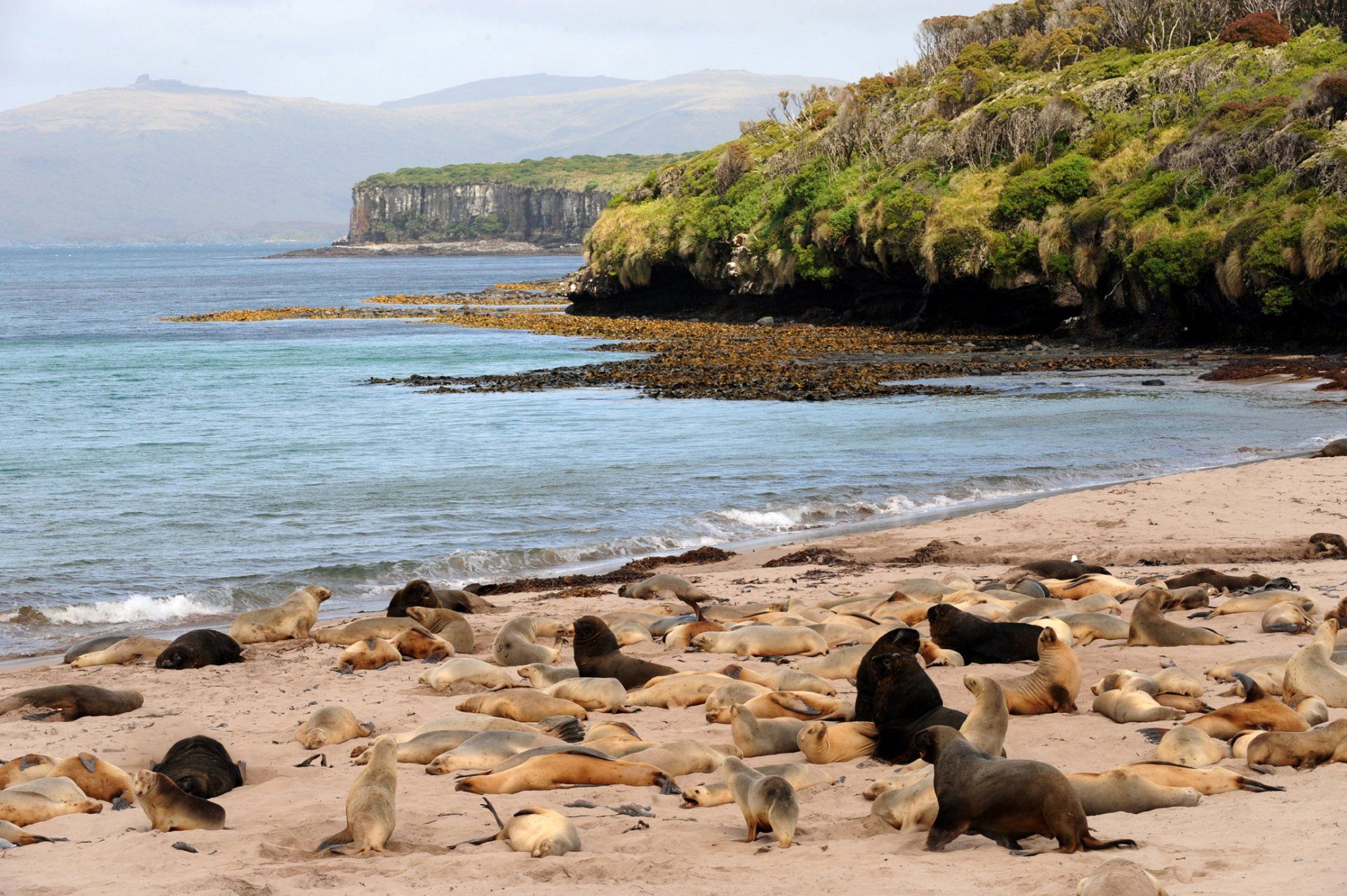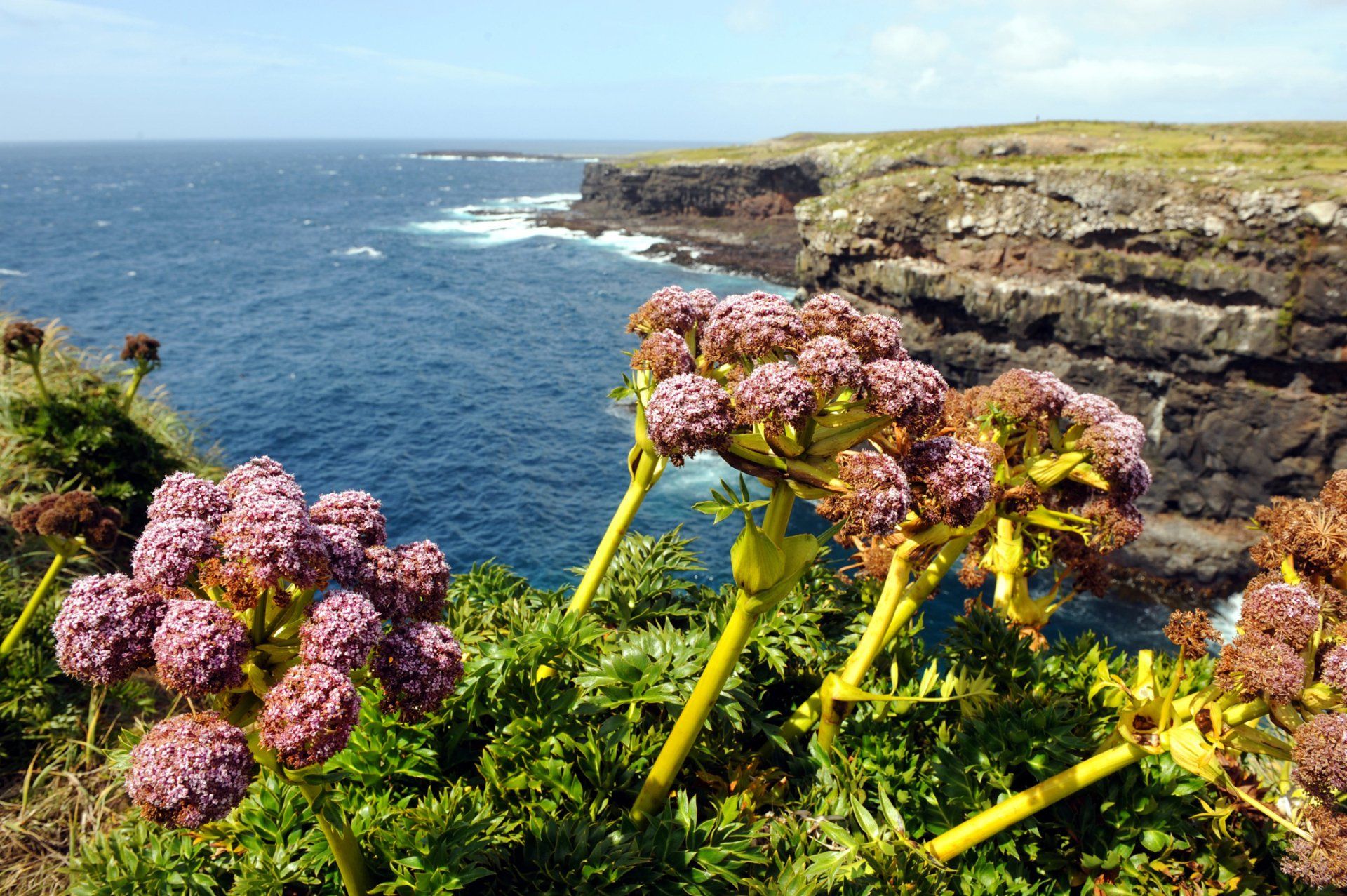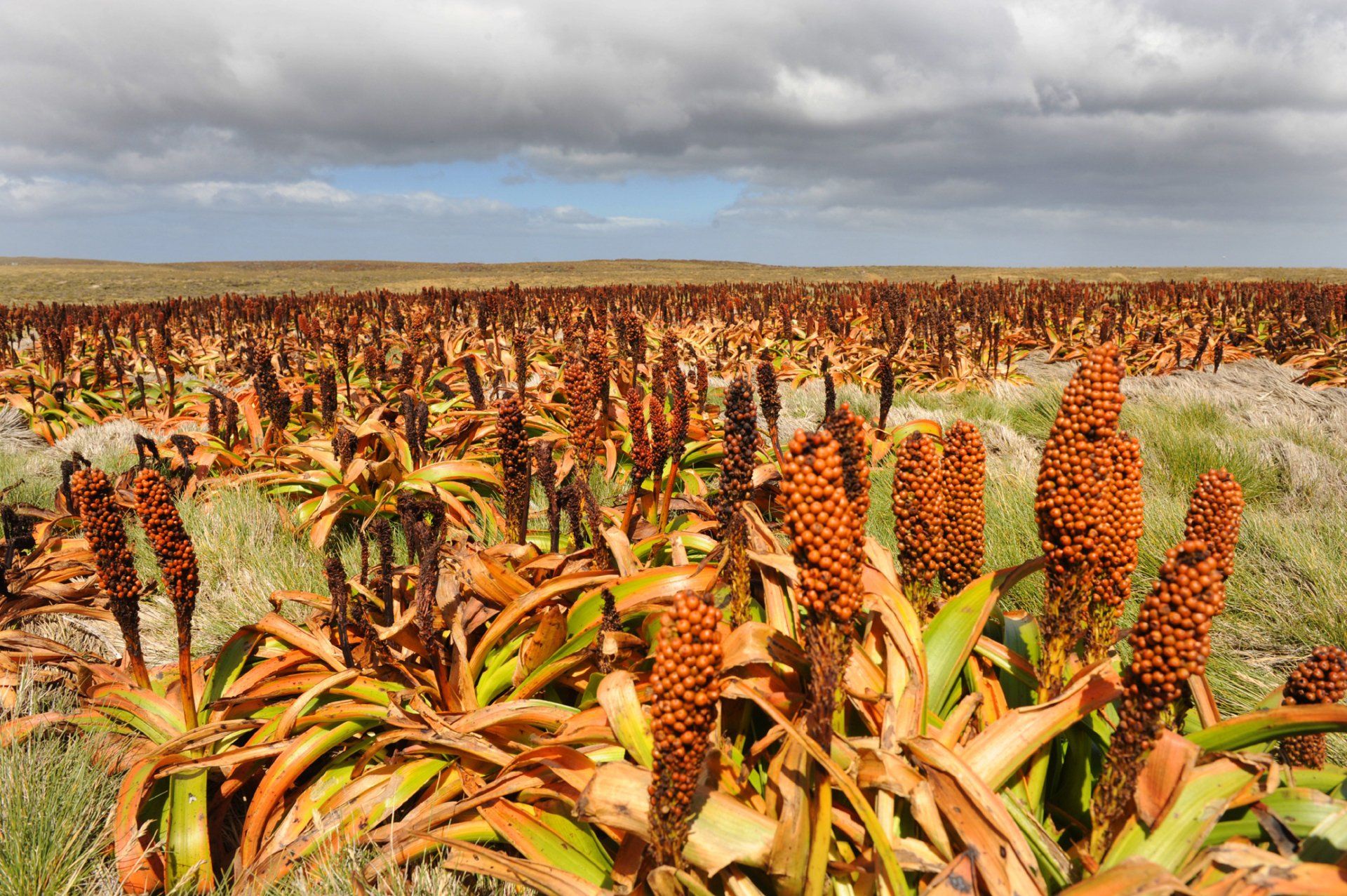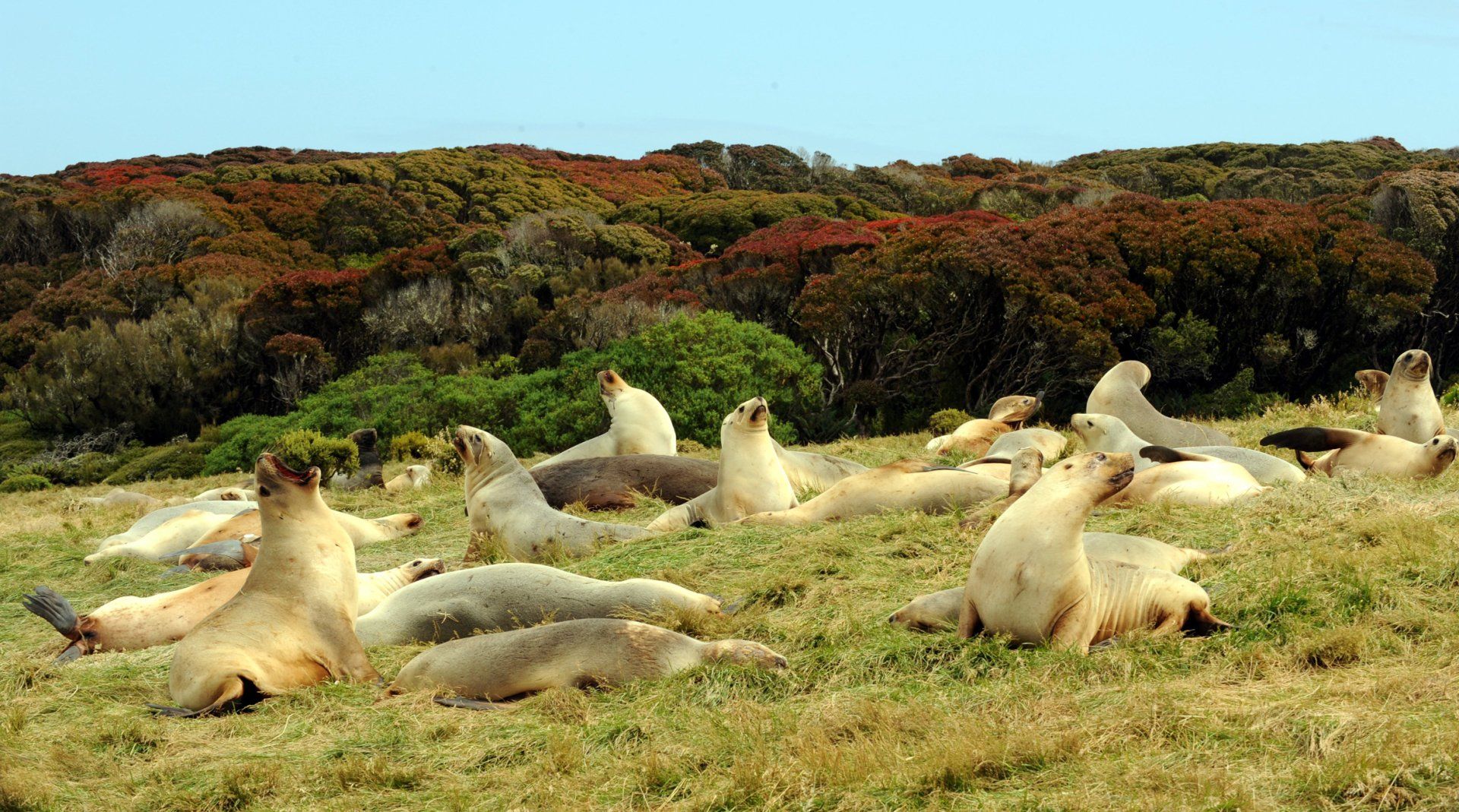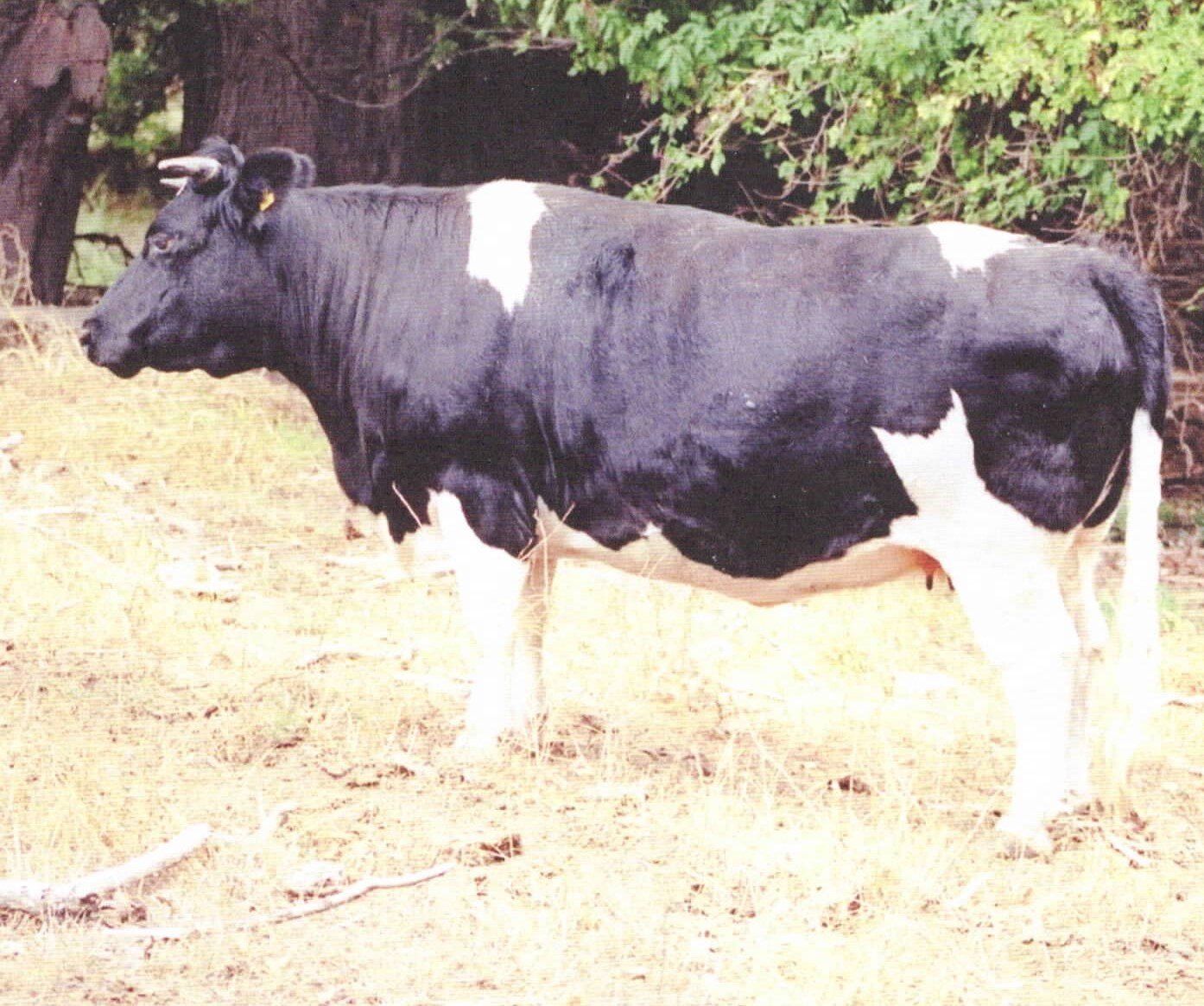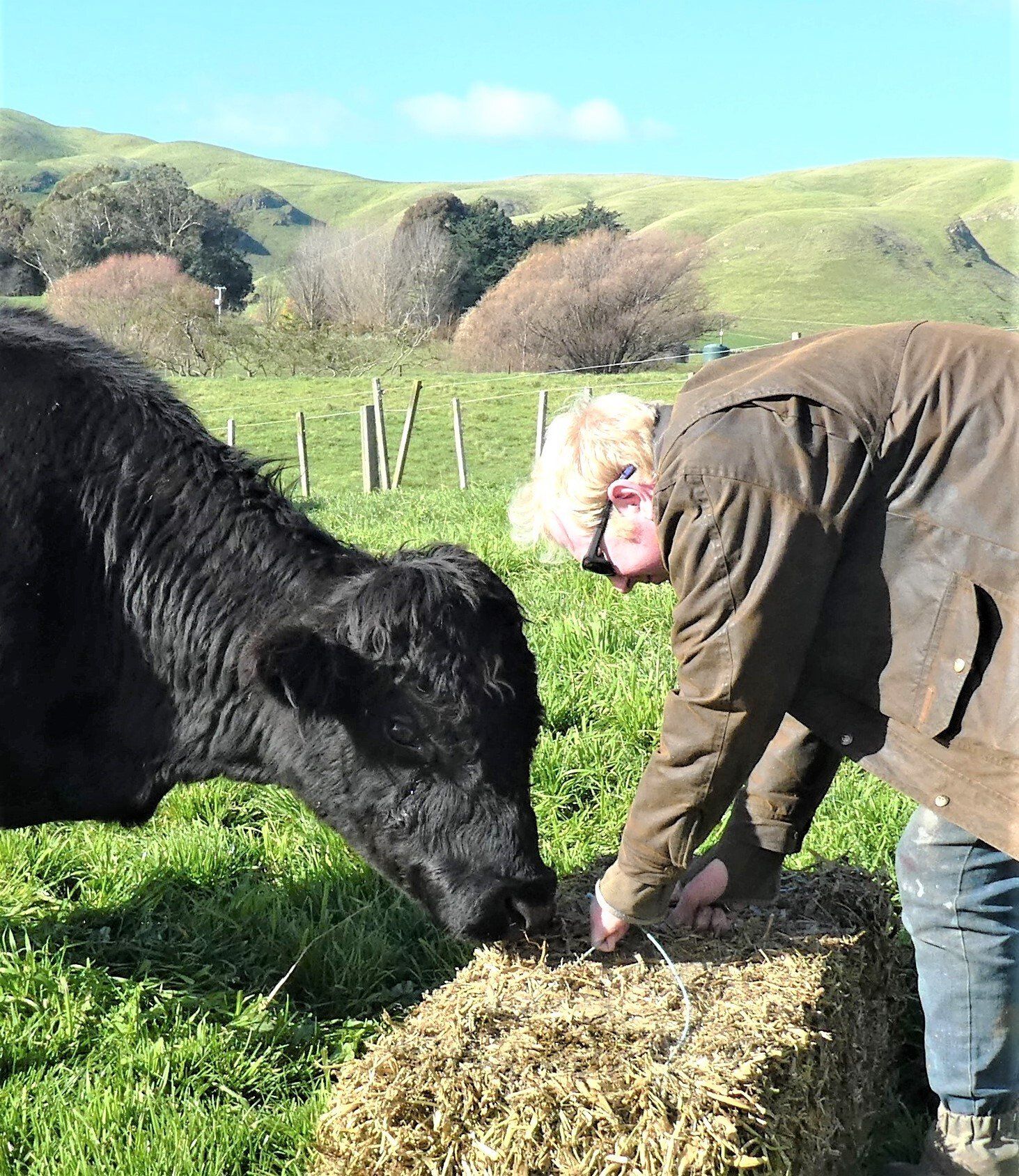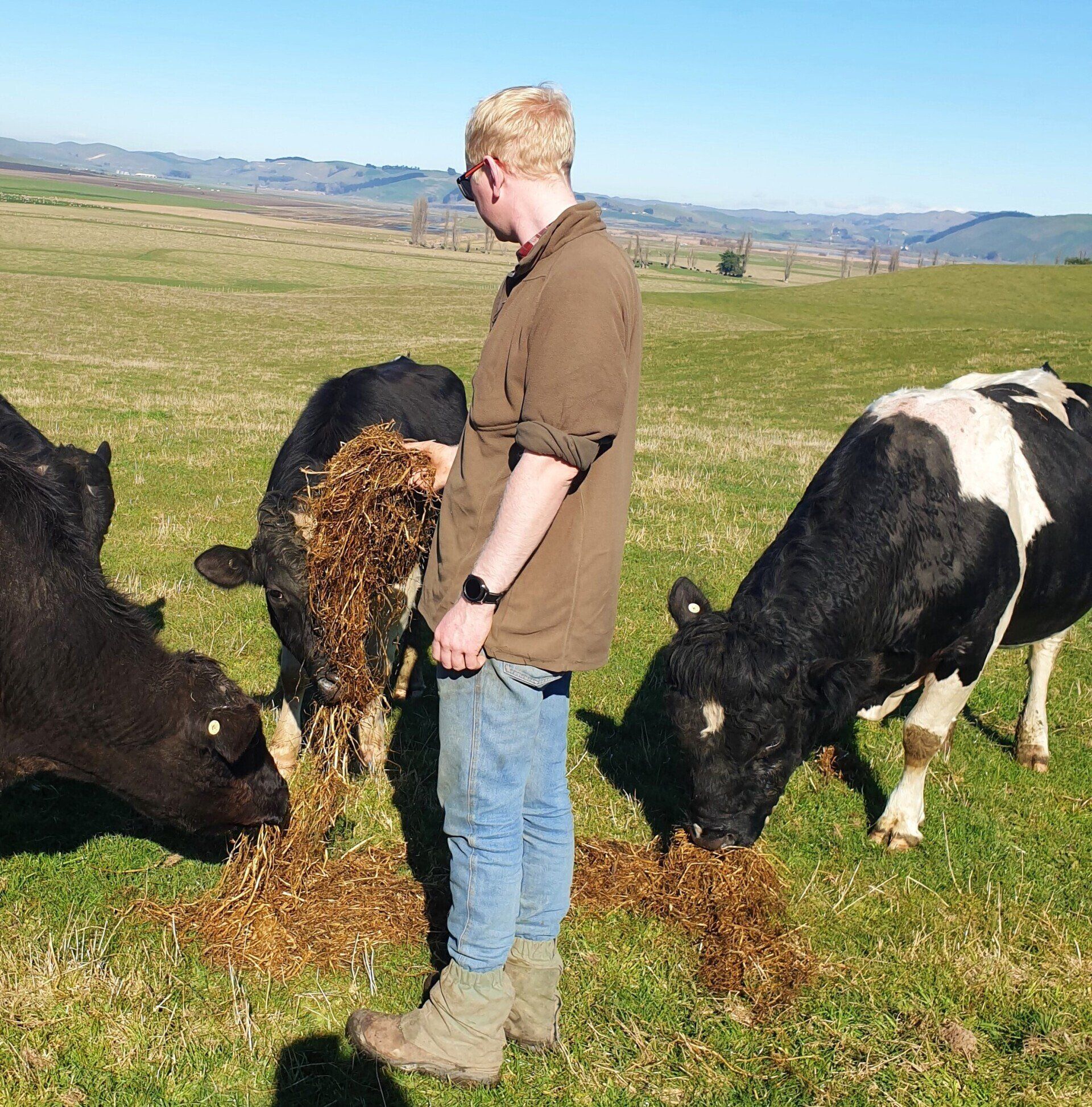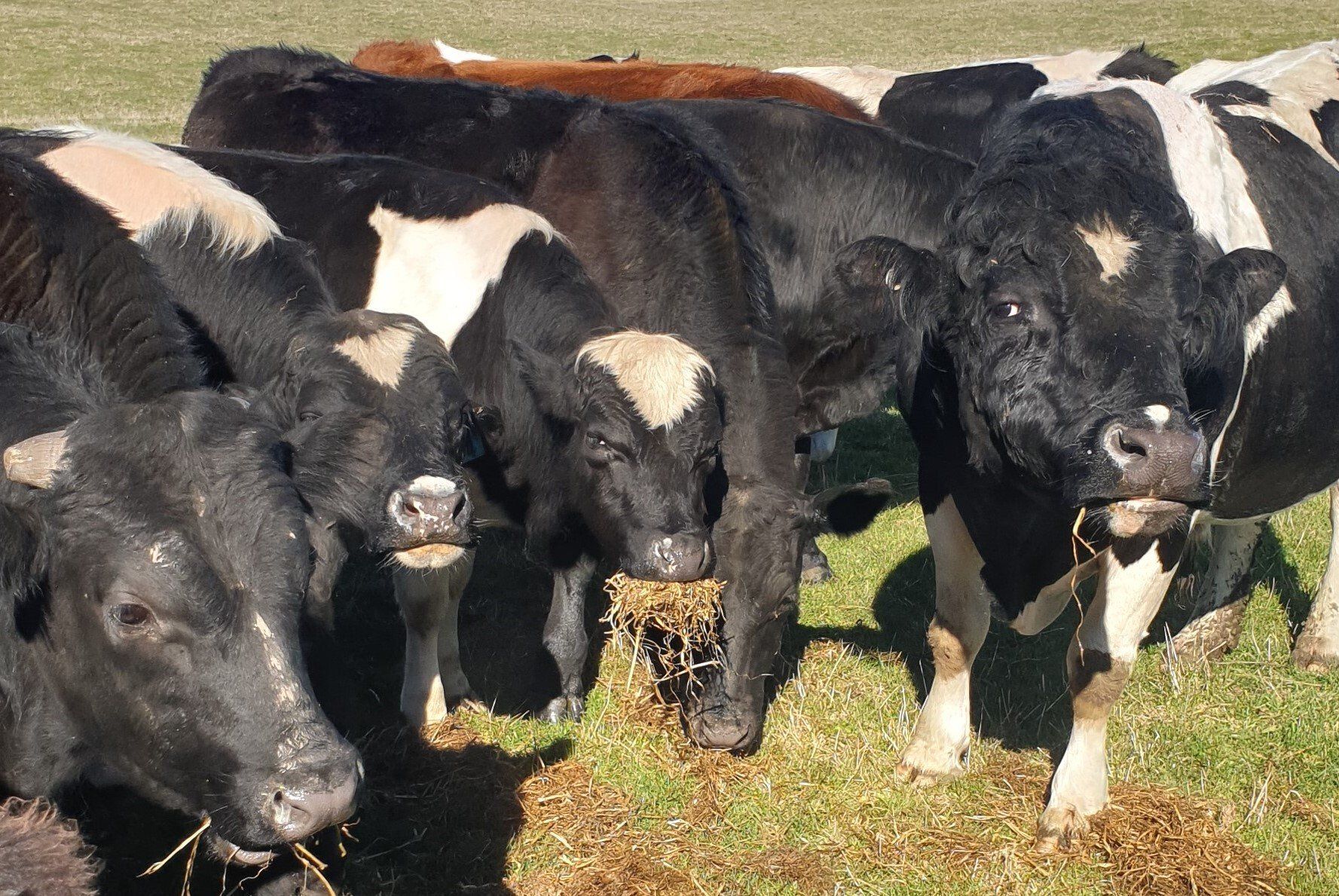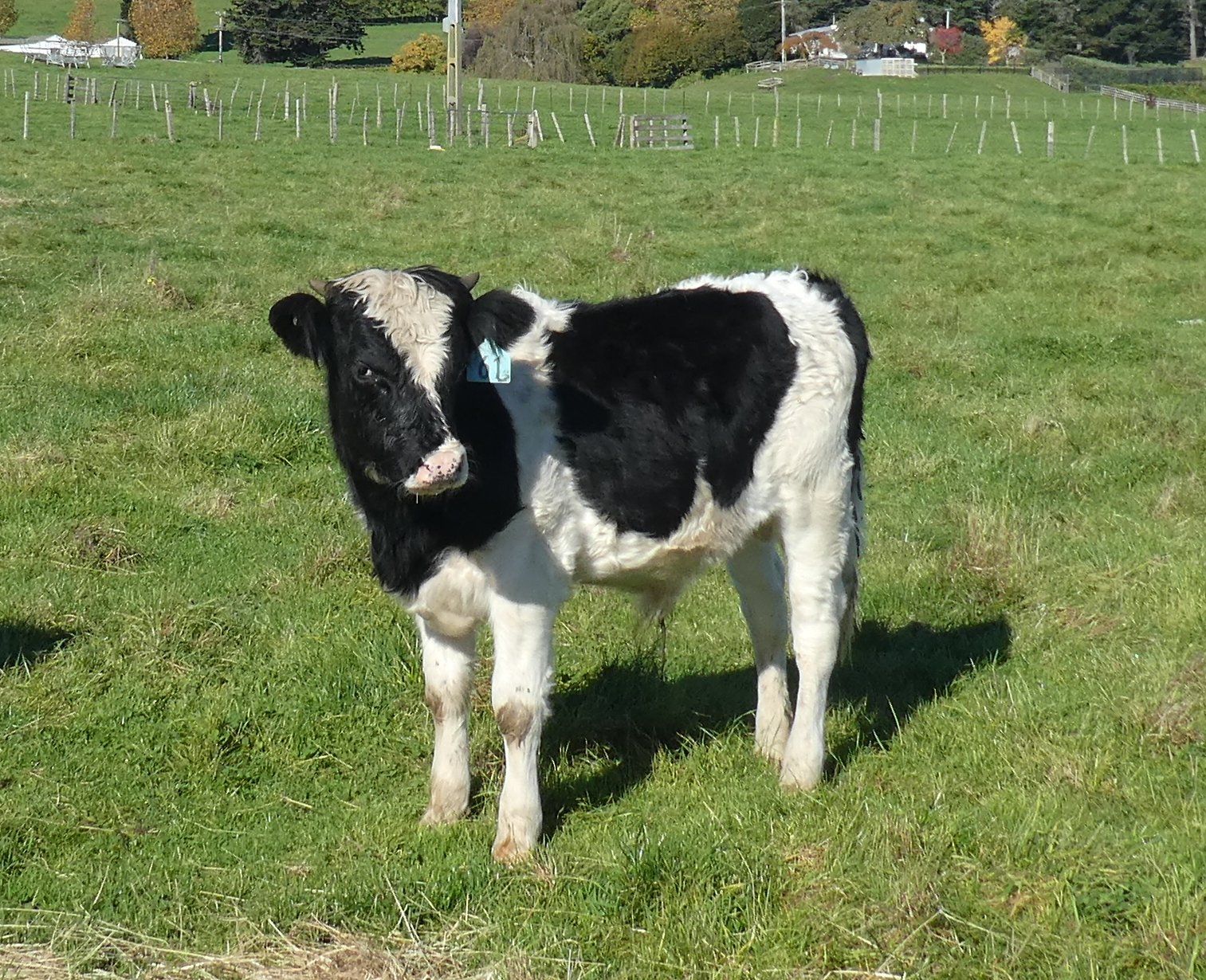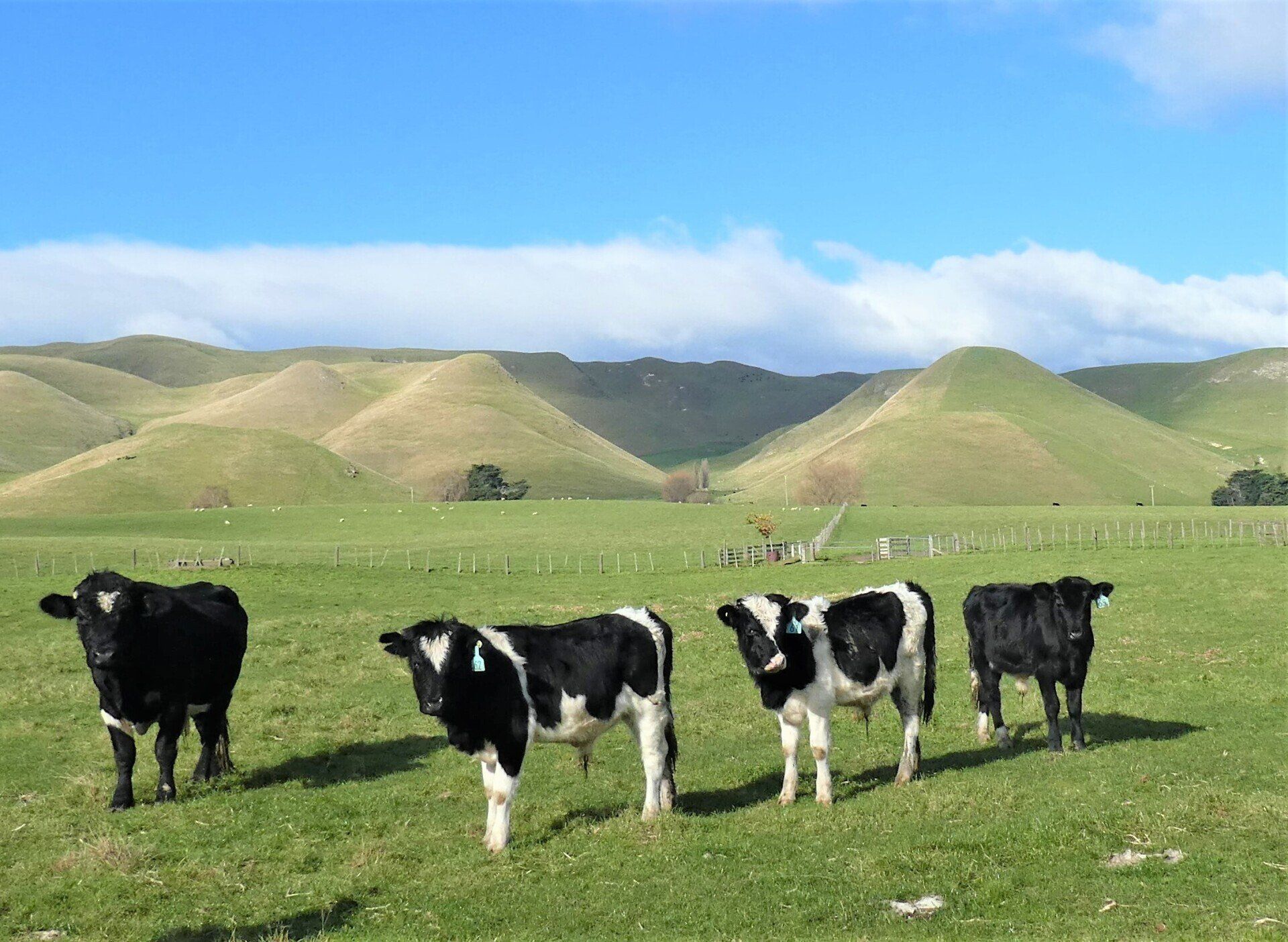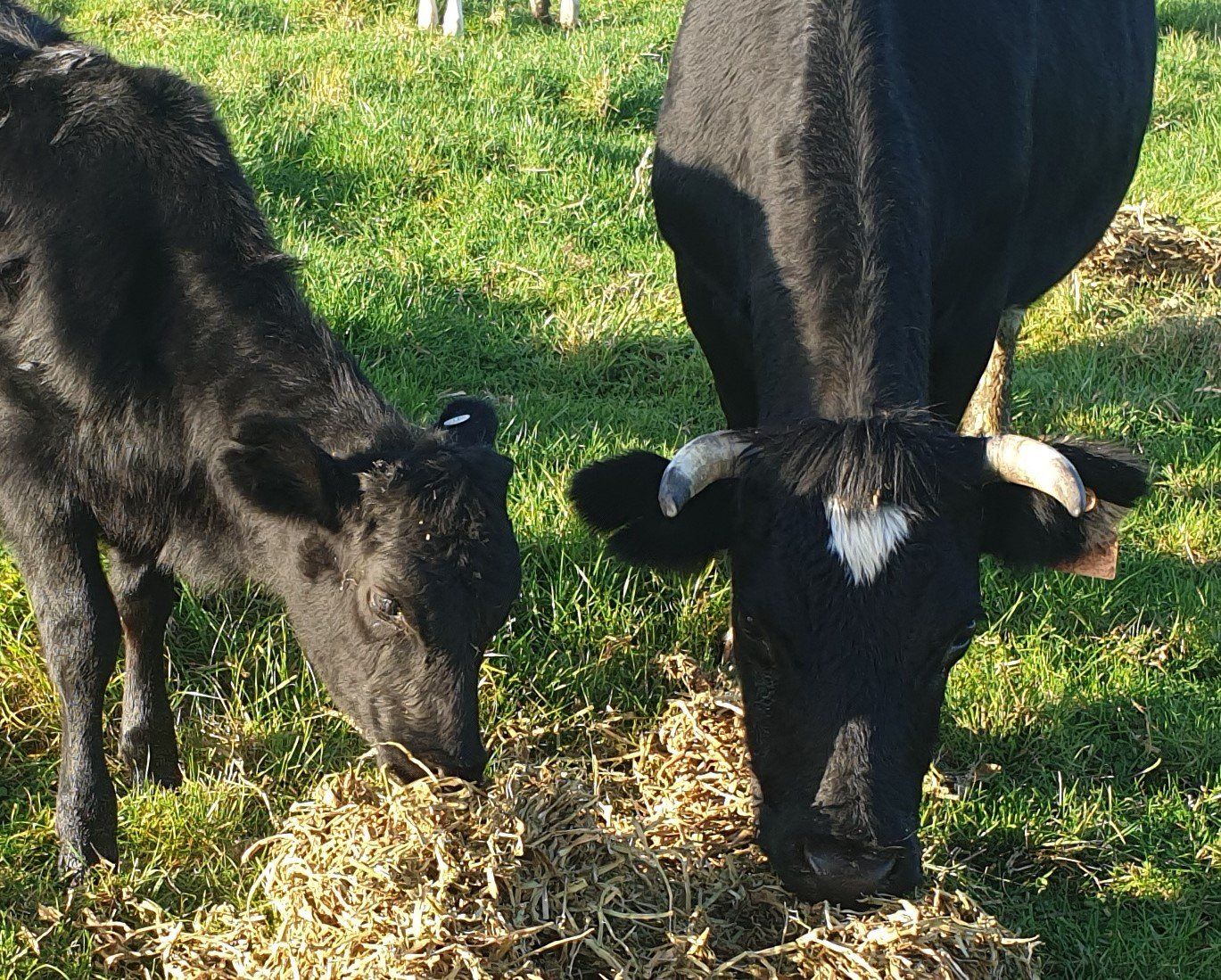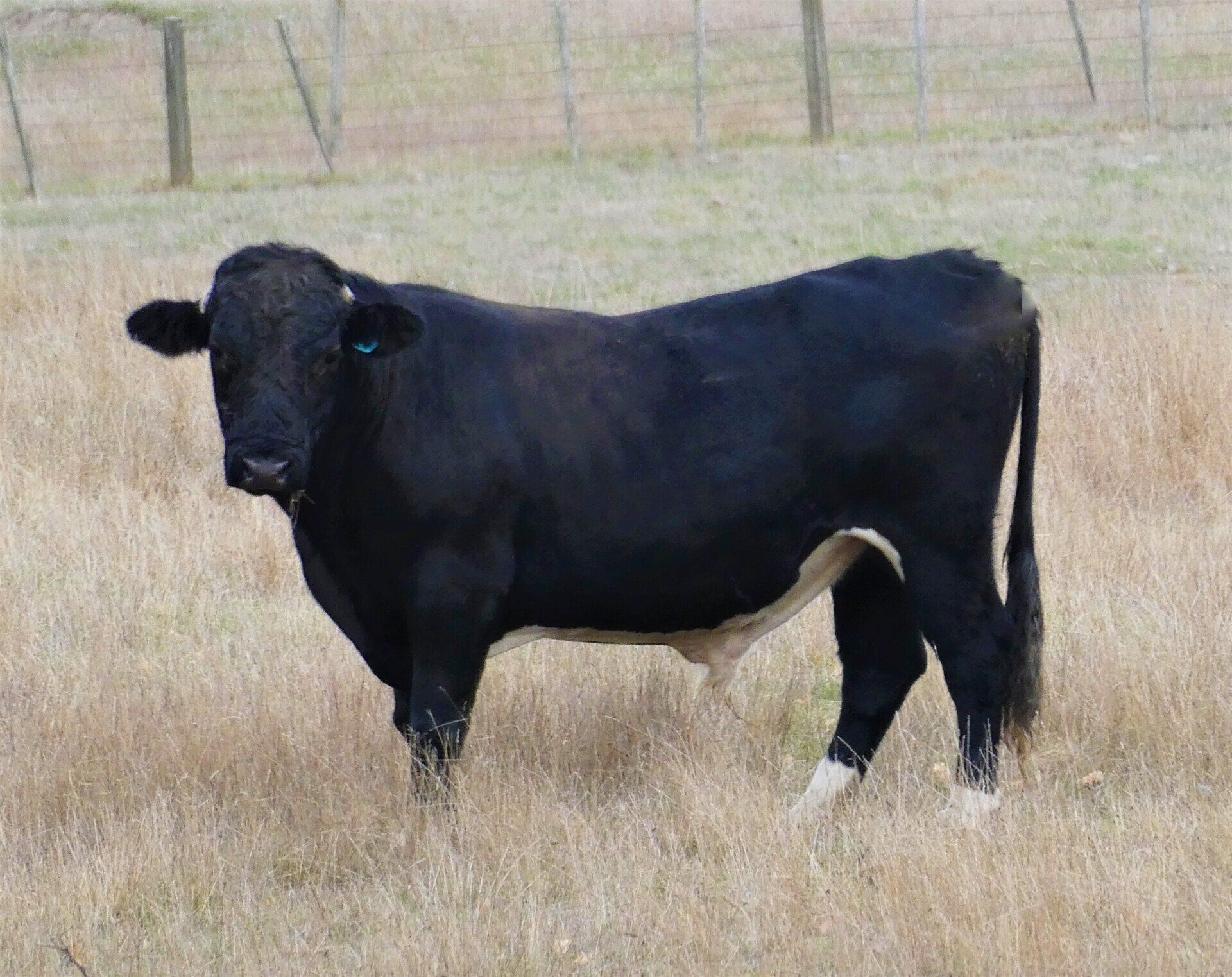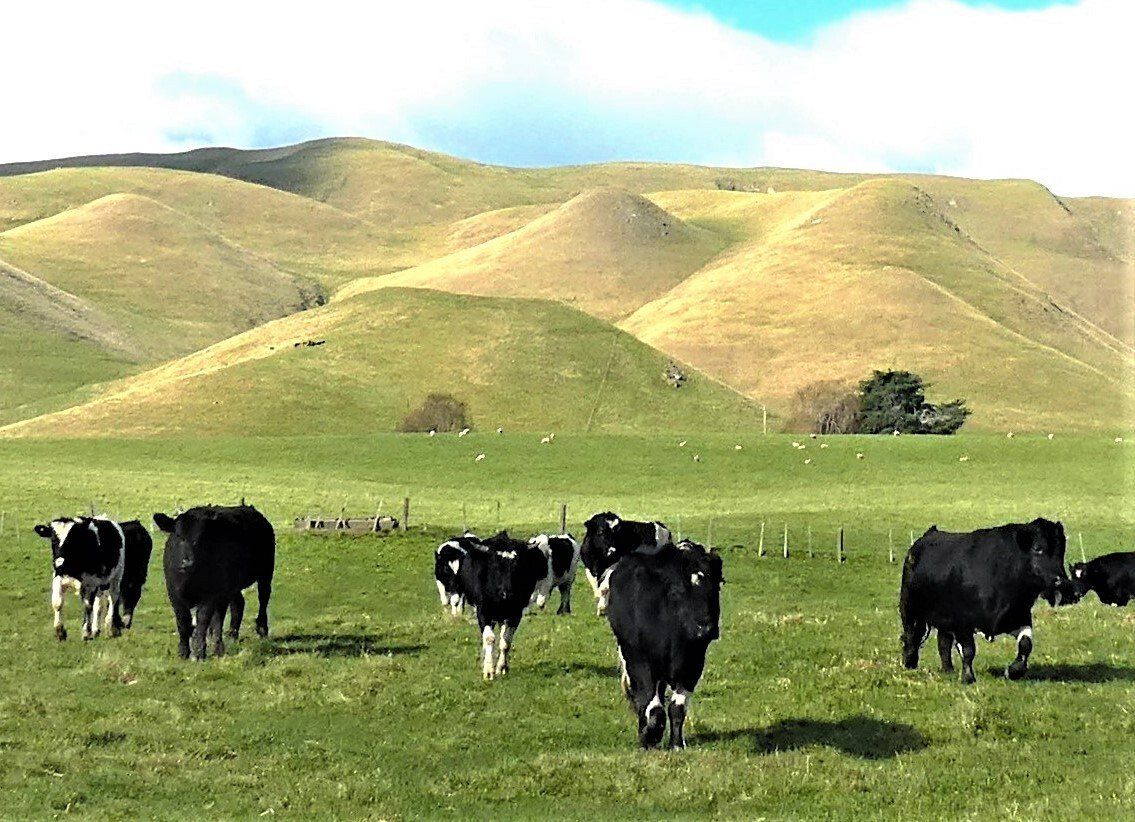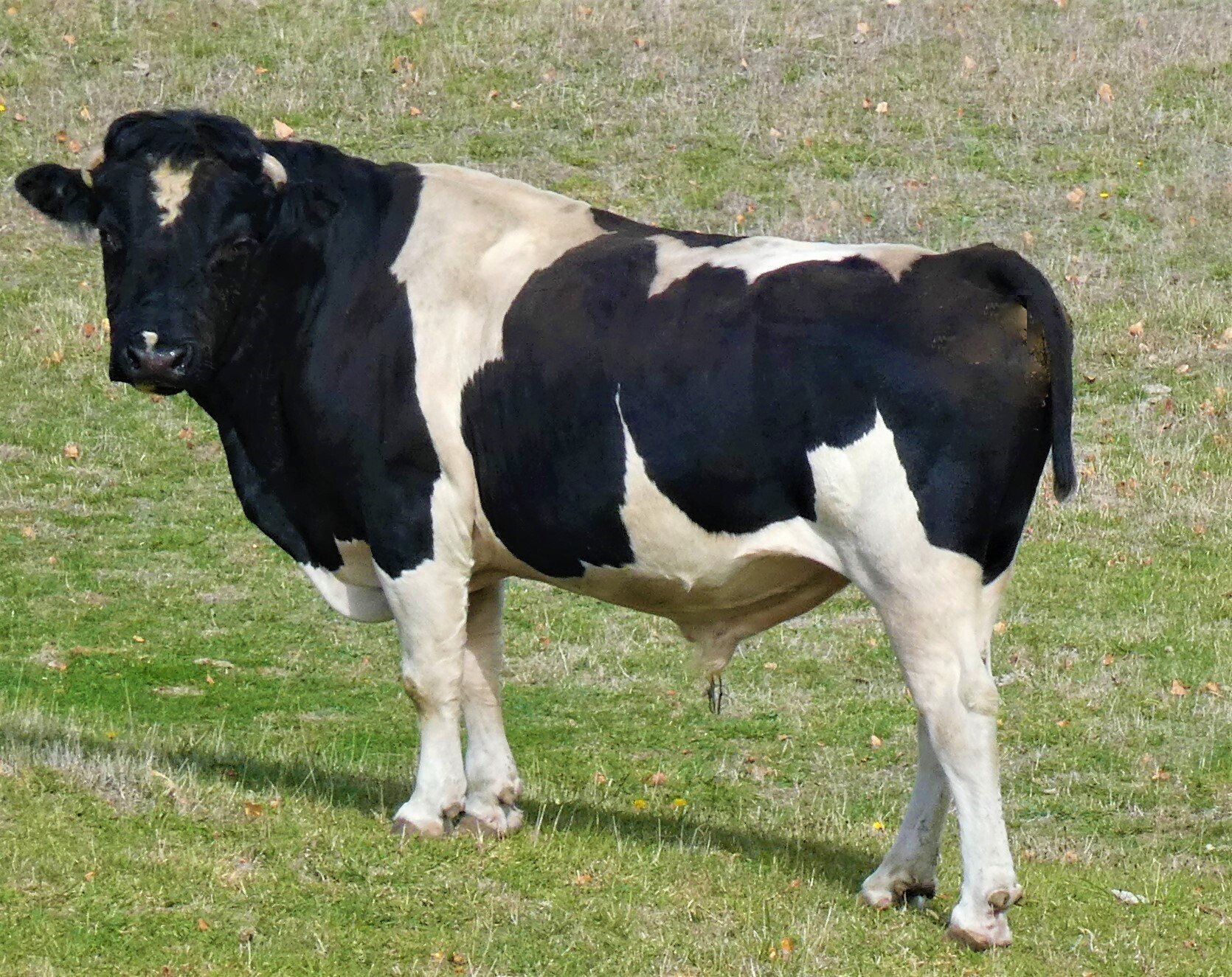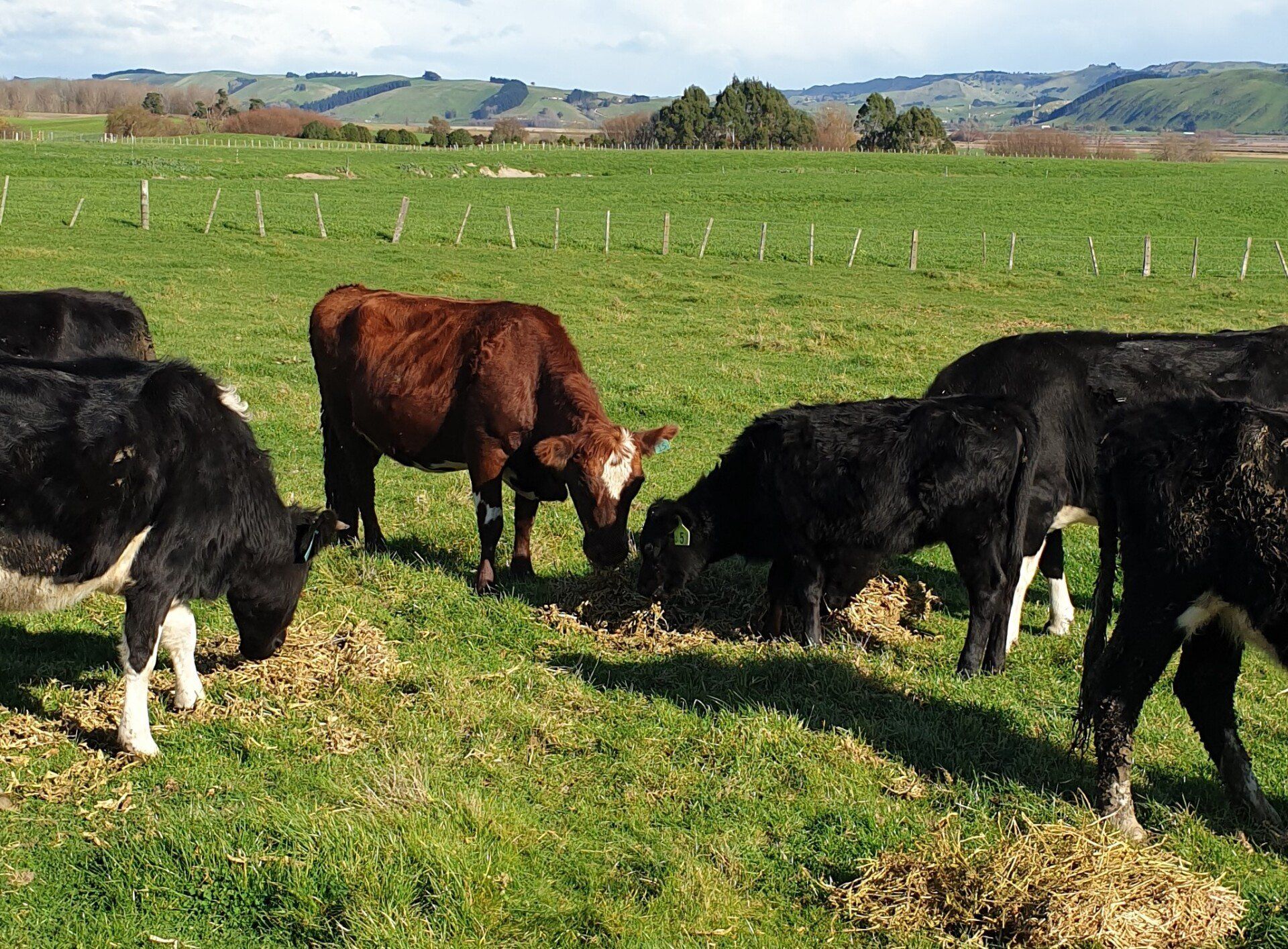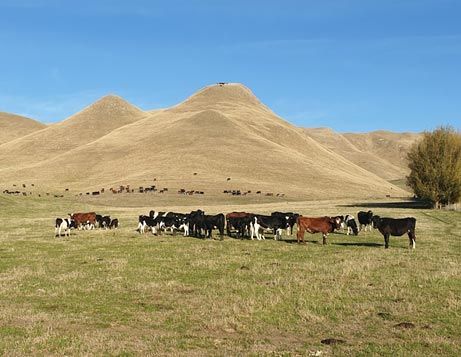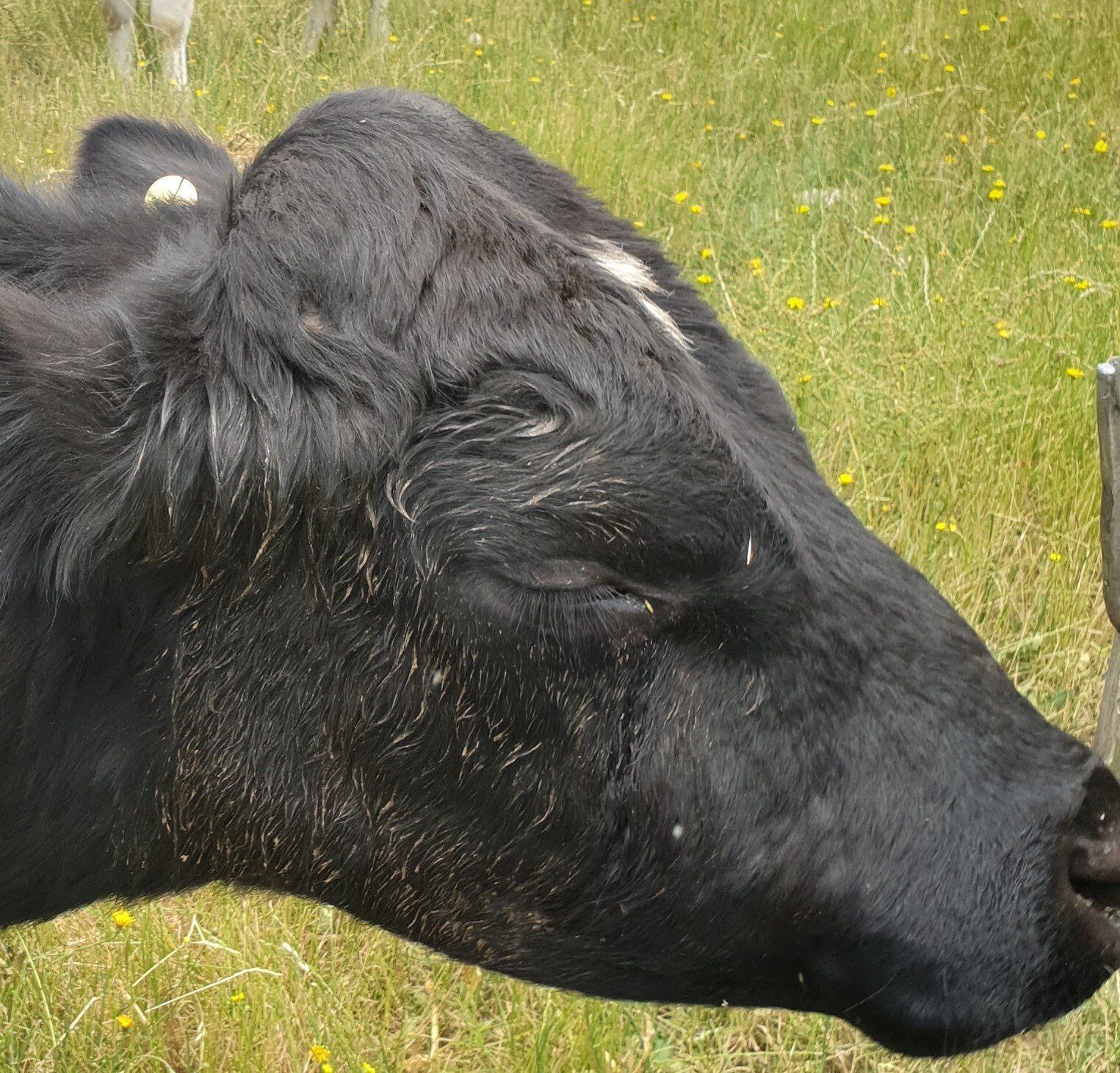ENDERBY CATTLE
The rarest cattle for a better future
The Enderbys:
A captivating tale of survival in harshest conditions, resurrection from extinction and the path of future potential.
New Zealand’s five Sub-Antarctic Islands groups lie scattered across the wild, ferocious Southern Ocean. The largest group are the Auckland Islands, 465 kilometres south of Bluff, New Zealand’s most southern town of the South Island, between 50o 30’ and 50o 55’ south and 165o 20’ and 166o 20’ east. The Enderby Island (710ha) is the most northern of the Auckland Islands Archipelago, separated from large Auckland Island by a channel with several islands. It enjoys a milder climate than the rest of Auckland Islands.
Polynesian explorers arrived at Enderby Island in the 13th or 14th centuries, about the time mainland New Zealand was settled. Archaeological excavations revealed their presence at Sandy Bay, in a sheltered and relatively hospitable location, accessible to seal colonies. Excavated earth ovens contained the bones of seals and sea lions, fishes, mussels, albatrosses and petrels. The Polynesians stayed for one or more summers and left behind scrapers, tools, and fish hooks.
Europeans discovered the Auckland Islands on 18.8.1806. Captain Abraham Bristow of the whaler “Ocean” sighted the islands and named them after a family friend “Lord Auckland”.
Enderby Island is named after Samuel Enderby of the British Whaling Company Samuel Enderby & Son. He had accepted a glowing report by Benjamin Morell who had visited Auckland Islands in 1829 and reported them to be “is one of the finest places for a settlement”.
Enderby and recruited settlers arrived at Port Ross at the Northern tip of Auckland Island in 1849 and were surprised to find over about 60 Maori with their Chatham Island Moriori slaves occupying the land. They had been there since 1842 and fortunately the two parties got on well.
Things turned out to be very tough for the settlers in the harsh climate though with crop failures and too few whales being caught. It became obvious that the colony could not survive here and the last settler departed by 1852.
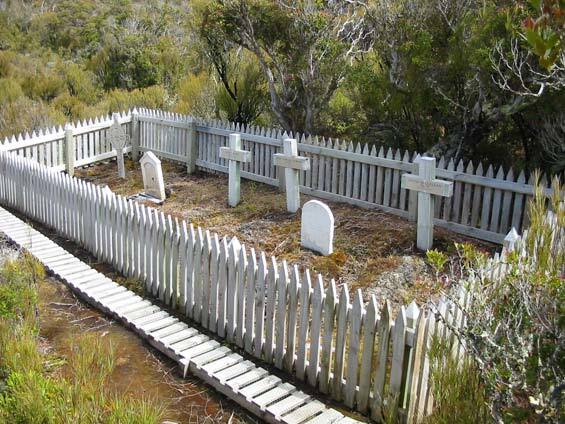
Many animals were introduced to the Auckland and Enderby Islands: goats, sheep, pigs, rabbits and mice and rats.
During the settlement era in 1849 about 45 cattle were introduced to Auckland and Enderby Islands. They were removed from Auckland Island in 1852 when the settlement was abandoned but remained on Enderby. The cattle on Enderby were believed to have died out and In 1894 new stock was introduced as part of WJ. Moffett’s pastoral lease. They never reached large numbers but tussock grass was virtually eliminated from Enderby Island by the beginning of the twentieth century. The cattle proceeded to survive on kelp and some other flora. They are thought to be the only cattle breed surviving on kelp and other sea-weed. By the mid1980s the cattle had nearly denuded the island of its growth and the New Zealand department of Conservation (DOC) started the efforts to eradicate the cattle from Enderby Island. But while pressure mounted to restore Enderby to its original condition, so did the awareness of the need to preserve these unique Enderby Cattle.
The Rare Breeds Conservation Society (RBCS) suggested establishing a breeding population on mainland New Zealand. The logistics and costs of getting live cattle off the island seemed insurmountable, so it was decided to concentrate on retrieving reproductive material post mortem.
The cattle were described by DOC as hardy, small and stocky. In April 1991 in a three weeks operation, 47 of the estimated 53 animals had been shot and eggs and sperm collected.
Resurrection of a breed:
A remarkable journey and success against all odds.
Oocytes and epididymal sperm was collected and in vitro fertilisation was attempted during the expedition but failed. Even when the ovaries could be removed promptly from the cows, the oocytes died, in part due to the inefficient field laboratory system used. The collected semen showed morphological irregularities and therefore was less efficient. On examination in New Zealand none of the frozen eggs was viable.
In vitro fertilisation of non-Enderby cows with Enderby sperm was started but after a lot of efforts only seven bulls were born. Mating them with other cows would dilute the genetic material even further.
The breed was considered extinct.
Meanwhile DoC learned that still a few cattle were alive on the island and continued its efforts to eradicate them, unaware of the problems the scientist were having to save the breed.
By the time the presence of surviving cattle had been communicated, only one cow (”Lady”) and her heifer calf had survived. DOC allowed the RBCS to capture the remaining two animals and transport them to New Zealand. This challenging operation, run by a dedicated team, was successful. In February 1993 "Lady" and her calf were shipped to New Zealand and transferred to Massey University, Palmerston North.
Unfortunately to young heifer died of the scours (diarrhea) while in the care of Massey and all hope for the survival of the breed was now resting on Lady.
But things did not get any easier. Traditional artificial insemination (AI) failed.
Next step was embryo transfer. Hormones were given to Lady, so she would produce multiple eggs, followed by AI. The embryos were flushed from her uterus and implanted in recipient cow, but none survived.
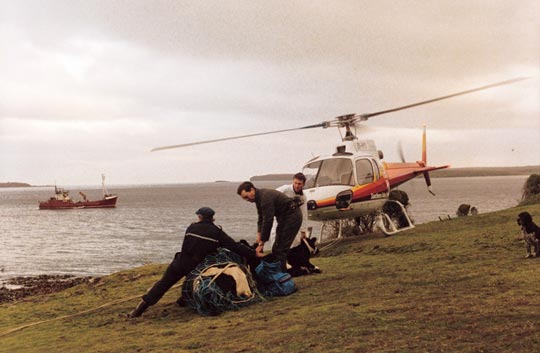
Time was running out and the RBCS obtained funding to get AgResearch at Ruakura, near Hamilton, involved. In vitro fertilisation was tried. 60 egg collections were made and the sperm from the bulls shot on Enderby Island used. 18 embryos suitable for introduction into recipient cows were produced but most died at the four- or eight-cell stage. Only one resulted into a healthy bull calf, called “Derby”, born in May 1998.
This was not regarded as enough to secure the survival of the breed and researchers turned to cloning. Dr David Wells cloned Lady in a world first. Adult somatic cells were collected from Lady’s ovaries and fused with enucleated donor egg cells. The fused cells were chemically activated and cultured and cows implanted with embryos, showing good development.
Out of the 74 embryos implanted in 37 cows, five clones were born by caesarean section. Only two females survived.
Cloning is notoriously difficult and the efficacy remains under 20%, even in ideal circumstances.
In this case though the cloning had succeeded in providing the females to continue the Enderby breed.
The two clones produced two heifer calves each in 2002 when bred to Lady’s only son Derby. This was the genetically equivalent of breeding Derby to Lady.
Science had succeeded in saving the breed but due to the very low numbers Enderbys were still at very high risks of dying out.
Origins and genetic back-ground of the Enderby Cattle
The Enderbys have an appearance that renders them closer to the Shetland Island cattle than the modern Shorthorn breed.
They are typically black and white but out of the 47 killed in 1991 three animals were red and white. The implication is that they are originally not a pure breed, but a mix of breeds resulting in cattle with short horns. The present breed has a distinctive appearance with a long body and short legs.
The cattle killed on Enderby Island were all in good condition, with only two having overgrown hooves and no evidence of any parasites. They survived for nearly 100 years in a harsh climate on a diet of seaweed, scrub and Southern Rata and seemed to have coped well with the conditions.
The semen of nine bulls collected in 1991 during the cull was used for testing and compared to seven other breeds: Angus, Friesian, Belted Galloways, Hereford, Jersey, Shetland and Danish Shorthorn. The Jersey was at that point the most likely contender but results need to be redone as there is increasing concern about the accuracy.
No genotype data were available for comparison with the Shetland cattle which is anecdotally suggested to be the origin of the Enderby breed and the belief amongst scientist is growing that this could well be correct.
A post-mortem of the cattle on the island showed that the rumen contents were very dry with minimal fluid component compared to typical cattle. The significant of this is not clear yet. At the time no-one was studying methane losses in ruminants and todays techniques not available.
Tests showed they did not have A2 milk.
Breeding Program
In August 2001 all surviving Enderbys were transferred to the property of veterinarian Dr Dave Matheson who played a vital role in the recovery and breeding operation of the cattle.
In 2002 the total number of Enderbys was only 7. Derby died in 2004 of unknown causes but a large quantity of high quality sperm was collected.
In 2006 six calves, three bulls and three heifers, were born from embryo implants to recipient mothers.
In October 2019 Hawke’s Bay Farmers Bill and Marcus Buddo purchased a herd of 27 Enderby cattle from Canterbury with the view to increase their numbers and further evaluate their genetic potential.
They are committed to bringing the herd numbers up and preserving the genetic identity of the pure breed. The cattle have acclimatised well to the dry conditions in Hawke’s Bay and several healthy calves have been born each season.
Future
The overriding goal is to secure the survival of this truly unique breed of cattle with a fascinating history. Their story of survival is a true testament to science and the commitment of a group of very talented people who never gave up in order to save the Enderbys from extinction.
As an “unimproved” breed the Enderbys may well retain beneficial characteristics that have been lost in modern breeds. For example the Shetland cattle’s milk and meat are proven through a range of studies to contain far more minerals and healthy fatty acids and far less unhealthy trans- fatty acids than conventional modern breeds. Studies are outstanding for the Enderbys but could offer great potential.
In the present world with global warming and green-house emission these cattle’s unique ability to survive on seaweed is becoming very interesting. Trials with sheep have shown a reduction methane in sheep with certain genetics.
Adding seaweed to cattle’s diet can potentially help fight climate change. Research shows that a specific type of seaweed can cut cows' methane production by up to 98%.
Presently we are working wth AgResearch (https://www.agresearch.co.nz/) to analyse rumen samples to explore this potential further. More genetic tests have also been conducted. The results are still outstanding.
Research is being developed to explore the meat qualities of this unimproved breed and the benefits for the consumer.
The Enderby Cattle are the only true New Zealand cattle breed. This in itself is a perspective to follow and a unique point of difference in the New Zealand beef industry.
We have crossed the Enderbys with several other cattle breeds on the farm. The bull was selected for build and temperament. One very notable observation is the ease of calving. The calves born are small, resulting in basically no observed birthing complication. The resulting weight-gain and growth, however, is very good and comparable with other calves on the farm.
In trials it will be important to ascertain if any benefits in the pure-breed is also replicated in the cross-breeds.
In the time of climate change and more land becoming marginal or needing to be used for cropping or dairy industry, the proven ability of the Enderbys to survive in a harsh climate and on a diet of seaweed and scrub, has the potential to ease the pressure on good farmland and facilitate a beef industry where one was previously not possible.
There are plenty of avenues to explore and this resurrected breed may well be a big player in the resurrection of this planet.
Have any questions?
Should you have any questions please do not hesitate to contact us.


